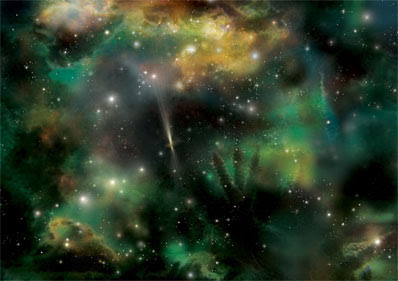Astronomy

- Fermi Solves The Mystery Of Gamma Ray Pulsars
A pulsar is a highly magnetised rapidly spinning neutron star , the dense core remaining aftera supernova explosion.NASA's Fermi Gamma-ray Space Telescope solves the mystery of previously unidentified gamma-ray sources. Fermi has now uncovered 16...
- Fermi Explores High Energy ?space Invaders?
New details of high energy particles detected by NASA?s Fermi Gamma-ray Space Telescope were revealed on 4th May, 2009 at the American Physical Society meeting held in Denver. Since its launch last June Fermi has discovered a new class of pulsars, probed...
- Strongest-ever Gamma Ray Explosion Reorded
Astronomers have disovered the "strongest-ever" gamma ray explosion , exceeding the power of some 9,000 exploding stars, in the deep space constellation Carina. The blast was discovered by Fermi Gamma-ray Space Telescope, a collaboration among NASA, the...
- India Launches Italian Payload
On Monday, the Italian AGILE satellite was launched into space on top of an Indian Polar Satellite Launch Vehicle. This was the first commercial launch that India's space program has ever conducted. Foreign spacecrafts have been launched with this...
- Swift Detected Its 1,000th Gamma-ray Burst.
This illustration shows the ingredients of the most common type of gamma-ray burst. The core of a massive star (left) has collapsed, forming a black hole that sends a jet moving through the collapsing star and out into space at near the speed of light.NASA's...
Astronomy
Fog lifted on dark gamma-ray bursts across the universe

Gamma-ray bursts, with their ability to pierce through gas and dust to shine brightly across the universe, are revealing areas of intense star formation and stellar death where astronomers have been unable to look -- the dusty corners of otherwise dust-free galaxies.
The conclusion comes from a survey of "dark" gamma-ray bursts -- bright in gamma- and X-ray emissions, but with little or no visible light -- reported today at a meeting of the American Astronomical Society in Pasadena.
Star formation occurs in dense clouds that quickly fill with dust as the most massive stars rapidly age and explode, spewing newly created elements into the interstellar medium to seed new star formation. Hence, astronomers presume that a large amount of star formation is occurring in dust-filled galaxies, although actually measuring how much dust this process has built up in the most distant galaxies has proved extremely challenging.
Long-duration gamma-ray bursts, the most brilliant flashes of light in the universe, are thought to originate from the explosion of massive stars. These events create two pencil-like beams of light, akin to lighthouse beacons, bright enough to be seen from as far away as 13 billion light years, near the limits of the observable universe.
While most gamma-ray bursts continue to shine brightly in optical light for many hours after the gamma-ray emission subsides -- a phenomenon known as an ?afterglow' -- those with little or no detectable afterglow, dubbed "dark GRBs," have puzzled astronomers. Some have speculated that most were so far away, and thus at such high redshift, that their optical afterglow shifted out of the wavelength region that optical telescopes can detect
- Fermi Solves The Mystery Of Gamma Ray Pulsars
A pulsar is a highly magnetised rapidly spinning neutron star , the dense core remaining aftera supernova explosion.NASA's Fermi Gamma-ray Space Telescope solves the mystery of previously unidentified gamma-ray sources. Fermi has now uncovered 16...
- Fermi Explores High Energy ?space Invaders?
New details of high energy particles detected by NASA?s Fermi Gamma-ray Space Telescope were revealed on 4th May, 2009 at the American Physical Society meeting held in Denver. Since its launch last June Fermi has discovered a new class of pulsars, probed...
- Strongest-ever Gamma Ray Explosion Reorded
Astronomers have disovered the "strongest-ever" gamma ray explosion , exceeding the power of some 9,000 exploding stars, in the deep space constellation Carina. The blast was discovered by Fermi Gamma-ray Space Telescope, a collaboration among NASA, the...
- India Launches Italian Payload
On Monday, the Italian AGILE satellite was launched into space on top of an Indian Polar Satellite Launch Vehicle. This was the first commercial launch that India's space program has ever conducted. Foreign spacecrafts have been launched with this...
- Swift Detected Its 1,000th Gamma-ray Burst.
This illustration shows the ingredients of the most common type of gamma-ray burst. The core of a massive star (left) has collapsed, forming a black hole that sends a jet moving through the collapsing star and out into space at near the speed of light.NASA's...
